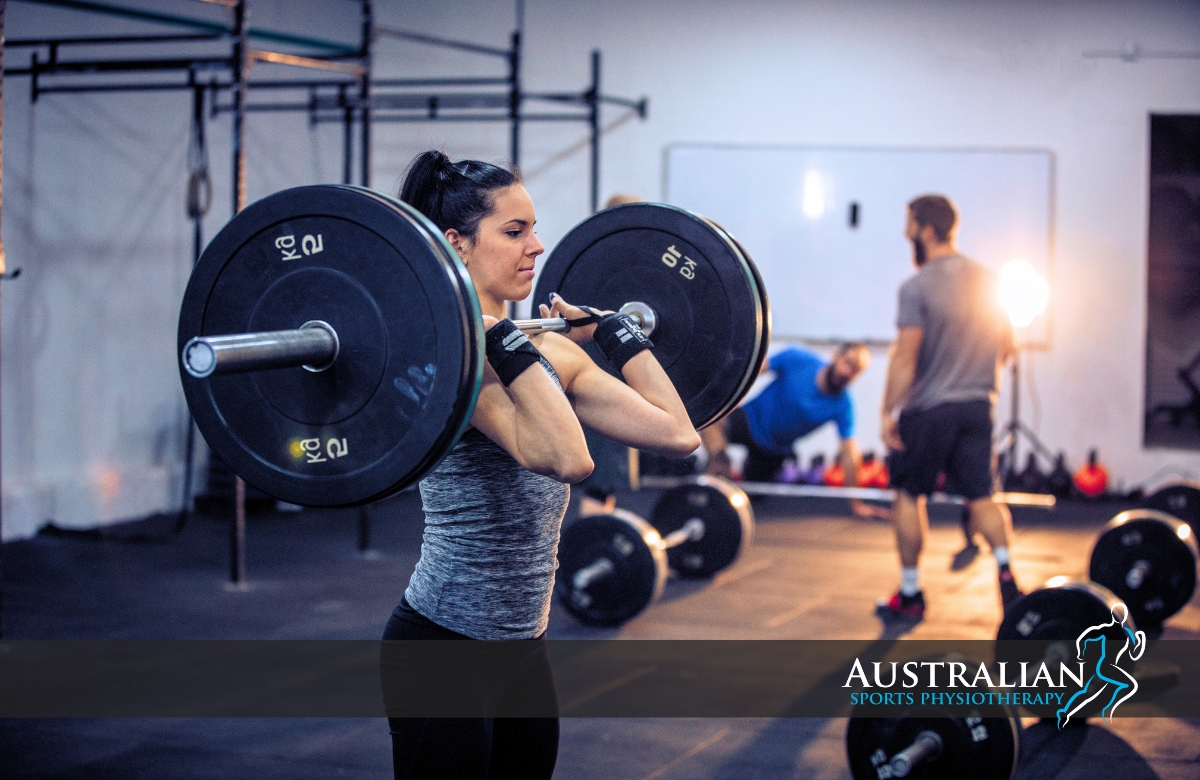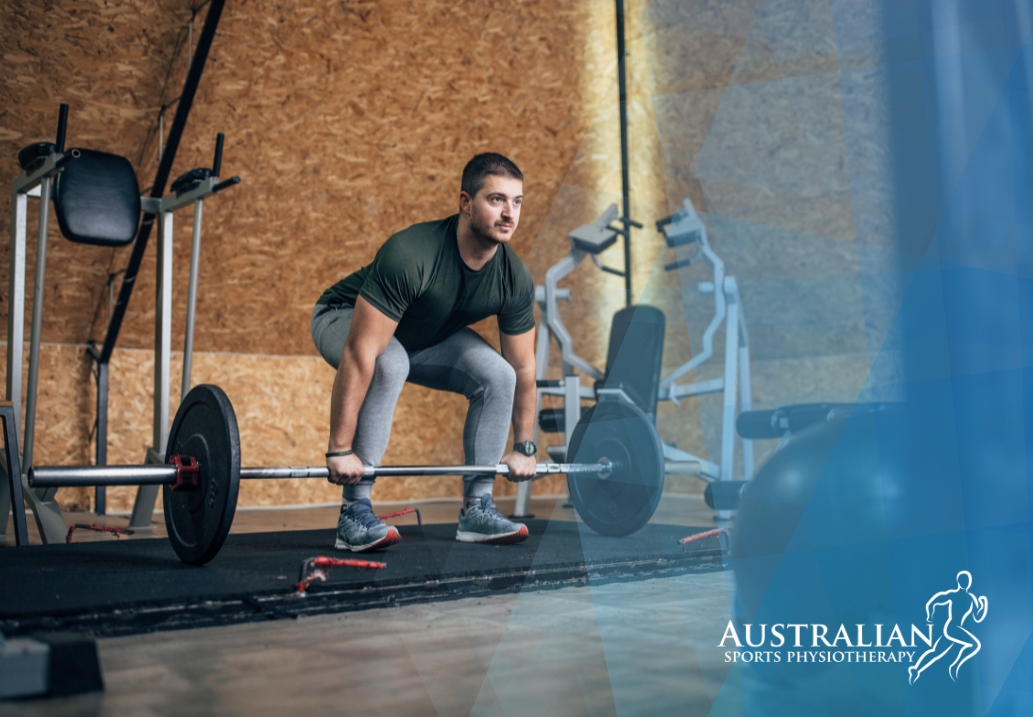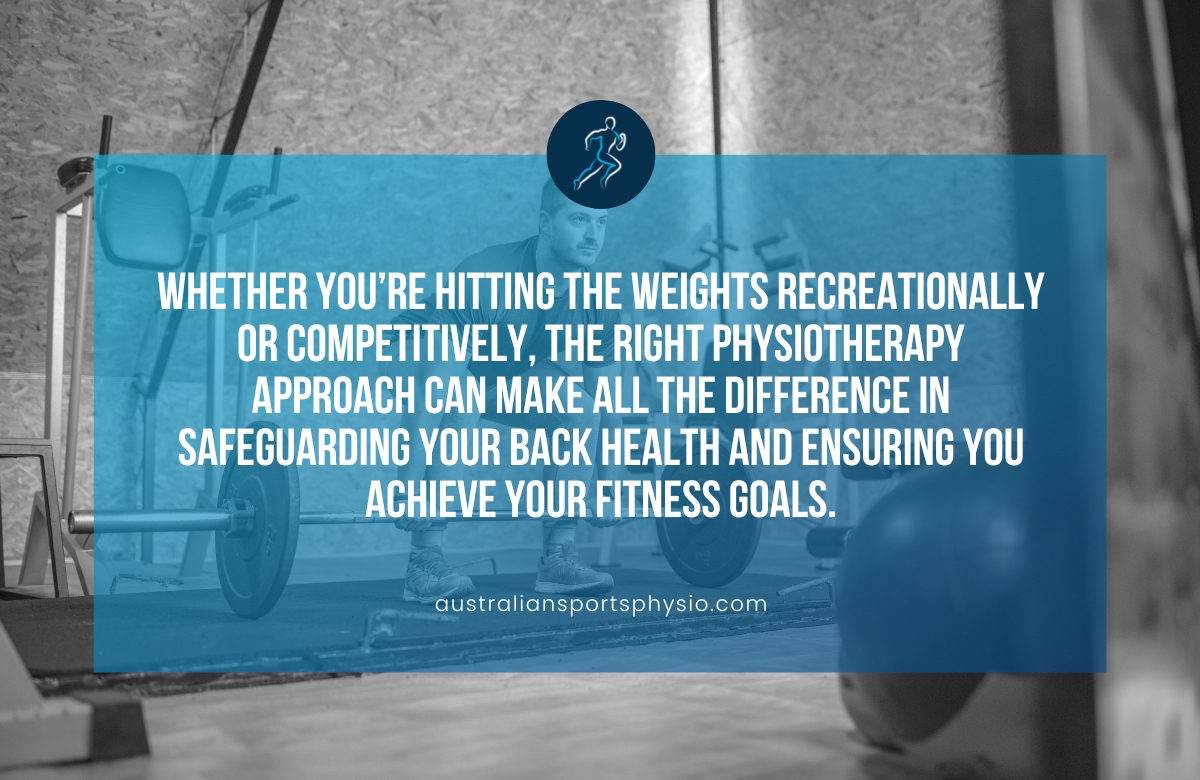Weightlifting can be an empowering and transformative activity, fostering both physical strength and mental resilience. However, with its many benefits comes the risk of injuries, particularly to the lower back. For many weightlifters, novice and experienced, lower back strains are a common hurdle that can disrupt training and progress.
Understanding the intricacies of these injuries and how to effectively manage them is crucial for anyone looking to maximise their weightlifting potential while minimising downtime.
Whether you’re hitting the weights recreationally or competitively, the right physiotherapy approach can make all the difference in safeguarding your back health and ensuring you achieve your fitness goals.
Physiotherapy and rehabilitation for lower back strains
A physiotherapist is highly recommended to guide your recovery and prevent re-injury. They can diagnose the specific issue and create a personalised rehabilitation plan. Key aspects of physiotherapy include:
1. Pain management techniques
- Heat therapy: After the initial 48-72 hours of icing, apply heat (e.g., warm bath, heating pad) for 15-20 minutes at a time to relax muscles and improve blood flow.
- Manual therapy: A physiotherapist may use hands-on techniques like massage, stretching, and mobilisation to reduce muscle tension and improve joint mobility.
2. Stretching and flexibility
- Single/double knee to chest: Lie on your back, bring one or both knees towards your chest, and hold.
- Child’s pose: Kneel on a mat, sit back on your heels, and extend your arms forward, resting your forehead on the mat.
- Cat-camel stretch: On hands and knees, gently arch and round your back.
- Lower back rotational stretch: Lie on your back with bent knees and feet flat, then slowly roll your knees to one side while keeping your shoulders on the floor.
- Hamstring stretches: Tight hamstrings can contribute to lower back strain.
3. Core strengthening
A strong core is crucial for stabilising your spine and supporting your lower back during lifting.
- Pelvic tilts: Lie on your back with bent knees, flatten your lower back to the floor by engaging your abdominal muscles.
- Glute bridges: Lie on your back with bent knees, lift your hips off the floor, squeezing your glutes.
- Planks (and variations): Maintain a straight line from head to heels, engaging your core.
- Bird-dog: On hands and knees, extend the opposite arm and leg while keeping your back flat.
- Dead bugs: Lie on your back, lift arms and legs to 90 degrees, then slowly lower opposite arm and leg while keeping your lower back pressed to the floor.
4. Gradual return to activity and lifting
- Progressive loading: Do not rush back to heavy lifting. Gradually increase weight and intensity as your pain subsides and strength improves.
- Focus on form: This is paramount. Re-evaluate and practice proper lifting mechanics for all exercises. A physical therapist or certified coach can provide guidance and feedback.
- Listen to your body: If you feel pain or discomfort, stop the exercise immediately. Differentiate between muscle soreness and sharp, increasing pain.
Proper form and injury prevention during lifts
1. Brace your core (intra-abdominal pressure)
This is paramount for spinal stability.
Method: Before initiating the lift, take a deep breath into your belly (not your chest). Imagine bracing for a punch in the stomach. Hold this tension throughout the lift.
2. Neutral spine
Your goal is to maintain the natural curves of your spine (slight lordotic curve in the lower back) throughout the entire movement. Avoid excessive rounding (flexion) or arching (hyperextension) of the lower back.
3. Hinge, don’t squat (for deadlifts/rows)
For exercises like deadlifts, good mornings, or bent-over rows, the movement should primarily come from your hips, not your lower back. Push your hips back as if you’re trying to touch a wall behind you.
4. Engage your glutes
The glutes are powerful hip extensors and play a vital role in protecting your lower back. Actively squeeze your glutes at the top of movements like squats and deadlifts.
5. Control the eccentric phase
Don’t just let the weight drop. Control the lowering (eccentric) part of the lift. This builds strength and helps prevent injury.

Final thoughts
By diligently applying these principles and focusing on proper form, you can significantly reduce your risk of lower back sprains and enjoy a long, safe, and effective weightlifting journey.
If you experience persistent lower back pain, consult a physiotherapist. We can diagnose any underlying issues and provide rehabilitation exercises.
Book an appointment with one of our experienced physiologists today for a comprehensive assessment and customised treatment plan.









